<head><
!– wp:group {“align”:”full”,”style”:{“color”:{“background”:”#f8f9f9″,”text”:”#121212″},”spacing”:{“padding”:{“top”:”139px”,”bottom”:”100px”,”right”:”var:preset|spacing|80″},”blockGap”:”var:preset|spacing|20″},”border”:{“radius”:”0px”,”width”:”0px”,”style”:”none”}},”layout”:{“type”:”constrained”,”justifyContent”:”left”}} –>
</Head>
History of the Gateway of India
The Gateway of India is a monumental bow located in Mumbai, India. Gateway of India was built in the British Raj in 1912 and was erected to memorialize the visit of King George V and Queen Mary to India. The Gateway of India is the most mugged monument in the world. The monument has since come to a symbol of Mumbai and is one of the most popular sightseer destinations in the mega city.. The Gateway of India is made up of three main corridors the central pate, the two bodies, and the exterior. The central pate is topped with a statue of Chatrapati Shivaji, an Indian legionnaire king. The bodies are decorated with carvings depicting religious scenes from Hinduism and Islam. And the exterior features cool gravestone mammoths at its base. The foundation monument was in the Indo- Islamic style, inspired by principles of 16th- century Gujarati architecture.. The final design of the monument by architect George Wittet was sanctioned in 1914, and construction was completed in 1924.
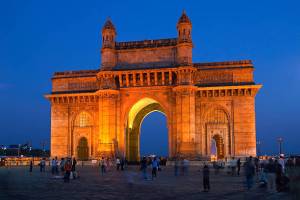
The structure is a memorial arc made of yellow basalt, which is 26 meters( 85 bases) high, with an architectural resemblance to a triumphal arc as well as the Gujarati architecture of the time. After its construction, the Gateway of India was used as an representational conventional entrance to India for an important colonial labor force. It’s also the monument from where the last British colors left India in 1948, following Indian independence. It’s located on the shorefront at an angle, opposite the Taj Mahal Palace and Tower Hotel, and overlooks the Arabian Sea moment, the monument is synonymous with the metropolis of Mumbai and is among its high- traveler. The Gateway of India is also a gathering spot for locals, road merchandisers, and shooters soliciting services. It holds significance for the original Jewish community as it has been the spot for Hanukkah fests, with the lighting of the menorah, since 2003. There are five jetties located at the Gateway of India, of which two are used for marketable ferry operations. The Gateway of India was the point of a terror attack in August 2003, when there was a bomb blast in a hack positioned in front of it. Access to the Gateway was confined after people assembled in its area following the 2008 Mumbai terror attacks, in which the Taj Hotel opposite the Gateway of India and other locales in its vicinity were targeted. In March 2019, the Maharashtra state government proposed a four-step plan to develop the position for the convenience of sightseers, following a direction issued by the state governor in February 2019.
Architecture of the Gateway of India

The Gateway of India is a majestic structure made up of white marble. It consists of four turrets and an arched entrance. The exterior features intricate busts, while the hinder facade has a more simple design. The Gateway is a major corner in Mumbai and it’s frequently used as a symbol of the mega city. The structural design of the Gateway of India is constituted of a big bow, with a height of 26m. The monument is erected in yellow basalt and indissoluble concrete. The structural plan of Gateway of India is aimed at the Indo- Saracenic fashion. One can also discover traces of Muslim architectural styles incorporated into the structure of the grandiose hall. The middle bean of the monument is about 48 bases in the fringe, with a grand height of 83 bases. Aimed with elaborate latticework, the 4 turrets are the arresting features of the exclusive structure of the Gateway of India. There are way constructed behind the arc of the Gateway of India that leads to the Arabian Sea. The monument is structured in such a thruway that one can witness the big breadth of the’ blue cover’ right ahead, drinking and transferring off vessels and callers. The Gateway of India of India is open from daylight to evening and it offers some great views of the Mumbai skyline. It’s also home to several cafes and shops, making it the perfect place to spend autumn or evening. Thousands of excursionists visit it every time, and it’s a popular spot for marriages and print shoots. It’s one of Mumbai’s most popular milestones, with further than 6 million callers per time from all over the world. With its open-air overlook sundeck offering views over Fort Kochi on one side and Mahalaxmi Temple on the other, it’s a crucial sightseer magnet in Mumbai. There are also several cafes and shops hard, making it a great place to spend autumn or evening.
When is the best time to visit Gateway of India?
The best time to visit Gateway of India is during the day when it’s not too hot. This is because there are many people and cars around, which can make it difficult to see the architecture. It also becomes more crowded in the evening and at night, so you may want to avoid those times as well.
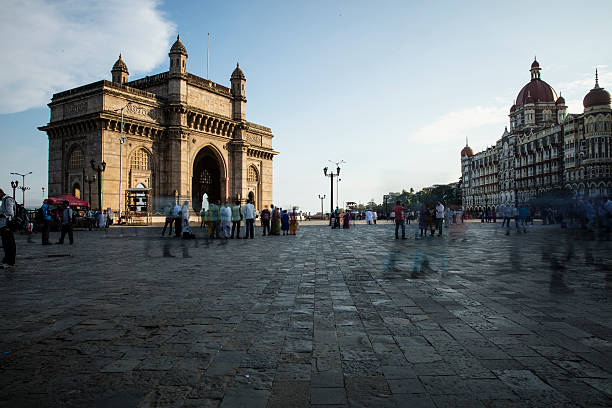
How to get there?
AIRPORT: Mumbai is well-connected by air, making it the Gatewaay to India. Mumbai is served by three airports: Mumbai International Airport, Chhatrapati Shivaji Airport, and Santa Cruz Domestic Airport. You can land at any airport that interests you, then take a taxi or, better yet, Ola or Uber to make your travel easier.
TRAIN: You can take a local train to the nearest railway station to the Gateway of India, which is Churchgate. It is also known as Veer Nariman Street, and it is a prime location in South Mumbai. This area gets its name from both the Churchgate railway station and St Thomas Church.
BUS: The following bus lines stop near the Gateway of India: 22LTD, 2LTD, A-106, A-111, A-112, A-116, and A-117.
Things to do near the Gateway Of India
1. Embrace the Sea at Marine Drive
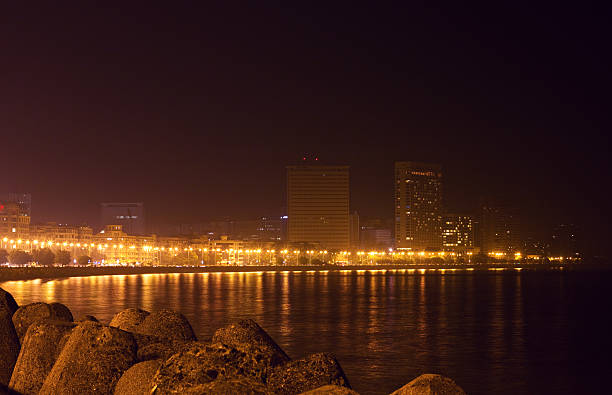
Churchgate cannot be discussed without mentioning Mumbai’s most vibrant district, Marine Drive. This stretch of road and pavement next to the Arabian Sea is also known as the Queen’s Necklace because it resembles a necklace. From here, you can see the entire Mumbai skyline as well as the Arabian Sea. You can sit here for hours or walk and jog; the choice is yours. However, a trip to Mumbai would be incomplete without a stop at Marine Drive.
2. Go to NCPA
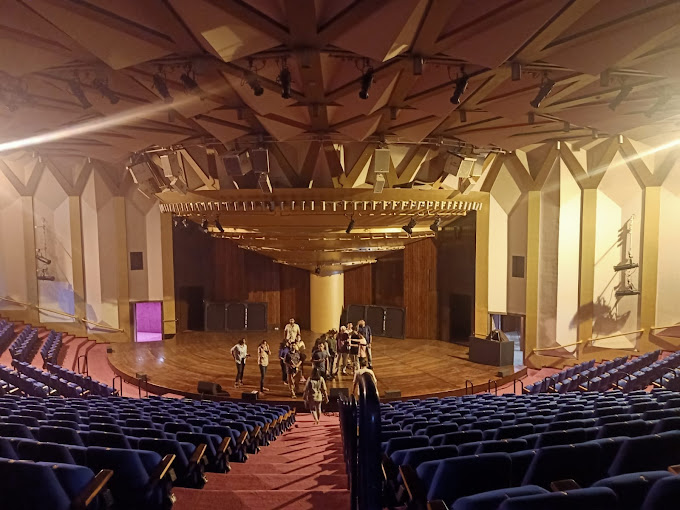
Do you appreciate Art? Don’t miss out on NCPA in Nariman Point. It is a well-known performing arts center that hosts regular plays and musical events. NCPA is a must-see for anyone who enjoys theatre.
3. Pizza By The Bay is a great place to eat.
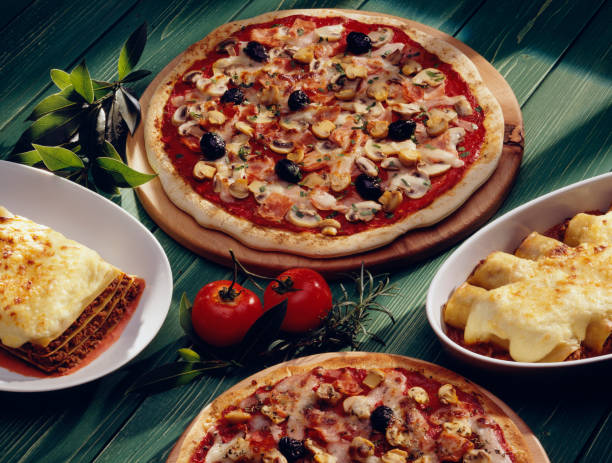
What could be better than a slice of authentic Italian pizza? With a view of the Arabian Sea, enjoy an Italian pizza. Churchgate has one of the best Italian restaurants in Mumbai for all fine-dining enthusiasts. Besides the fact that they serve authentic pizza, the view is also breathtaking. It is located directly across from the iconic Marine Drive and is one of the most romantic places to eat in Mumbai.
Fun facts about the gateway of India
1. Following India’s independence, the last British army returned only through the Gateway of India. For ships passing through the Arabian Sea, this monument is known as the Gate of India.
2. The Gateway of India costs a total of 21 lakh rupees to build, with the Government of India bearing the entire cost.
3. The Gateway of India epitomizes the grandeur of Mumbai, which is a synthesis of both historical and modern cultural environments.
4. A statue of Maratha king Chhatrapati Shivaji Maharaj has been erected in front of the Gateway of India, reflecting Maratha pride and serving as a symbol of courage.
5. Asisham created the architecture for the Gateway of India.
6. The Gateway of India is an architectural marvel in Colaba, Mumbai, with a height of about eight floors.
7. The Gateway of India buyer’s paradise is close to Causeway and some of South Mumbai’s most famous restaurants, including Big Mies, Café Mondengar, and the famous Caix Leopold.
8. It was built in 1911 to commemorate the King’s visit, and it incorporates both Hindu and Muslim architecture.
9. The Gateway to India was constructed of yellow basalt and concrete. Between 1915 and 1919, work on Apollo Bunder (Port), where the Gateway of India and the new Sea Wall were built, began.
10. The Gateway of India is built towards the vast Arabian Sea, and it is connected to Marine Drive, a road that runs parallel to the sea.

Leave a comment